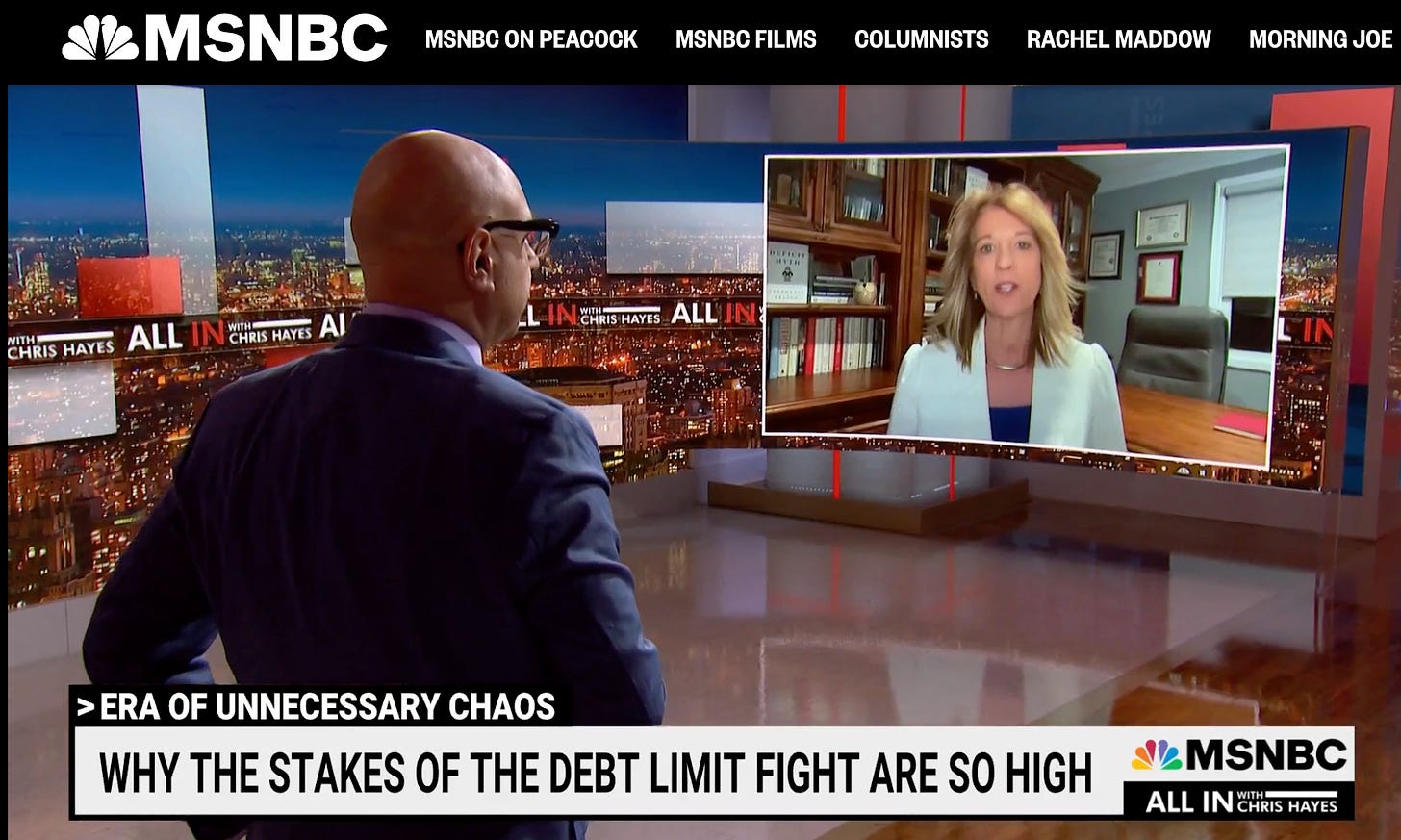If you’ve been reading or watching the news, then you know that the US hit its self-imposed debt ceiling limit of $31.381 trillion on Thursday, January 19. It’s a pity it didn’t happen on February 2, because Groundhog Day is pretty much the perfect way to mark the occasion. Here we go again!
On the day the limit was reached, Treasury Secretary Janet Yellen, like her predecessor Steve Mnuchin, wrote a letter to Congress, explaining that the U.S. Treasury would begin taking “extraordinary measures” to make good on spending commitments it previously authorized under the law.
That’s what’s so frustrating about the debt ceiling limit. When the limit is reached, it forces Congress to reaffirm its willingness to spend what it is already legally obligated to spend.
Think About That
Imagine you walk into a restaurant with a group of friends. You ask for a table for six, and you follow the hostess to a booth. Everyone studies the menu and then places an order. A draft beer and a bacon cheeseburger. Pinot Noir and a medium-rare steak. A glass of chardonnay and the red snapper. Mushroom risotto and a diet coke. An old-fashioned and the braised pork chops. Chicken Alfredo and a glass of Sauvignon Blanc. The waiter takes the order to the kitchen, and the chefs begin to prepare the meals. By ordering the food and drinks, you’re committing to pay the tab. Now suppose everyone gets up and walks out, stiffing the restaurant instead of paying the bill.
As I said in this interview with Ali Velshi last week, House Republicans are threatening to stiff a bunch of people that the government has already promised to pay.
If Congress stiffs bondholders, health care providers, military personnel, civilian employees, etc., it’s not because the federal government “ran out of money” or “maxed out the national credit card.” Anyone who speaks in these terms is either ill-informed, lazy, or opportunistic.
For a currency-issuing government like the United States of America, there is no such limit on spending. As I said to Mehdi Hasan during an interview last week, the debt limit is nothing like the limit on our personal credit cards.
Mastercard and American Express have determined the limit on the credit cards in my wallet. It’s a good thing they do, because as a currency user, I might be tempted to rack up more debt that I can afford to pay back. As lenders, companies like Visa and Mastercard impose credit limits to reduce the amount of bad debt they have to write off.
The federal government’s finances don’t work like a household’s. As the issuer of the currency, the US government can never “run out of money,” nor can it face bills coming due (in USD) that it can’t afford to pay. The debt ceiling isn’t imposed by any lender. It’s imposed on the government by the government. There is no applicable analogy to a household budget.
The Debt Ceiling is Destructive, Duplicative, and Dumb
As former Fed Chairman Alan Greenspan told Congress in 2003:
[Y]ou may want to reconsider whether the statutory limit on the public debt is a useful device. As a matter of arithmetic, the debt ceiling is either redundant or inconsistent with the paths of revenues and outlays you specify when you legislate a budget.
He’s not the only former Fed Chairman to suggest doing away with the debt ceiling. During his tenure, Ben Bernanke said, “It would be a good thing if we didn’t have it.”
At at least four former Treasury Secretaries— Bob Rubin, Larry Summers, Paul O’Neill, and Tim Geithner—agree. And so does former Fed Chair and current Treasury Secretary Janet Yellen, who referred to the debt ceiling as “very destructive” and indicated that she supports abolishing it.
Who else agrees? Most economists (including many conservatives), budget experts at centrist think tanks, and the ratings agency Moody’s.
Today, the US is one of only two countries in the world with a debt ceiling. The other is Denmark, but they don’t weaponize it the way we do in the United States. And even if they did, a default on Danish government bonds wouldn’t wreak the kind of havoc on the global financial system that a default on the world’s most important financial instrument—US Treasuries—would bring.
The Treasury Department can apparently rely on “extraordinary measures” to avoid reneging on payments until sometime in early June. Beyond June, in order to avoid stiffing anyone, Congress will need to raise (or suspend) the debt ceiling, or the Treasury Department will need to find a way to circumvent it.
Unfortunately, you can rule out a suspension of the debt ceiling limit. House Republicans want their pound of flesh in exchange for lifting—not suspending—the ceiling.
As Rep. James Comer (R-KY) recently explained, House Republicans will only agree to lift the debt ceiling in exchange for federal spending cuts. Otherwise, he says, his party “won’t budge.” Meanwhile, White House press secretary Karine Jean-Pierre insists that the administration “will not be doing any negotiation over the debt ceiling.” They want a clean vote to lift it.
So it’s Groundhog Day. Again.
In Closing
Each time we do this, it feels like the risk of an outright default nudges higher. I think it’s fair to say that this Congress is different. But I think it’s still extremely unlikely we see a voluntary default by the US government. One way or another, Congress will almost certainly do what it has always done in the past—i.e. vote to raise the debt limit. But because there is at least some chance, however small, that Congress refuses to act, legal scholars (and others) will continue to look for ways to avoid default by ending the Groundhog game once-and-for-all.







Thank you Dr. Kelton. When this came up again a week or so ago, I said to myself something like ... well the US is a currency producing nation... what is this nonsense. But, I’m no expert.... and here you are saying exactly... ok, approximately what I thought about it. Thank you for your work! You are one of my heroes!!!
Mint the coin, if reason doesn’t prevail.